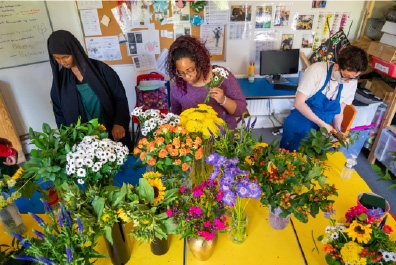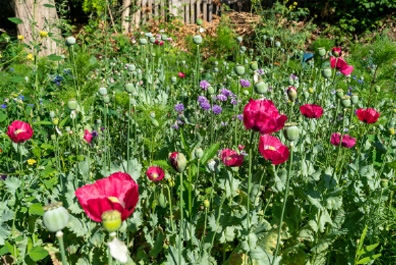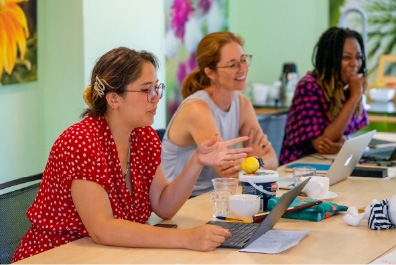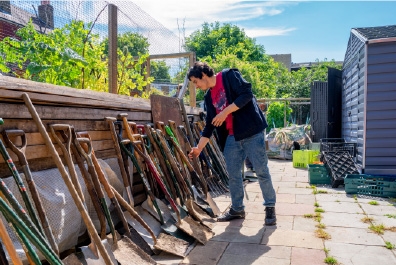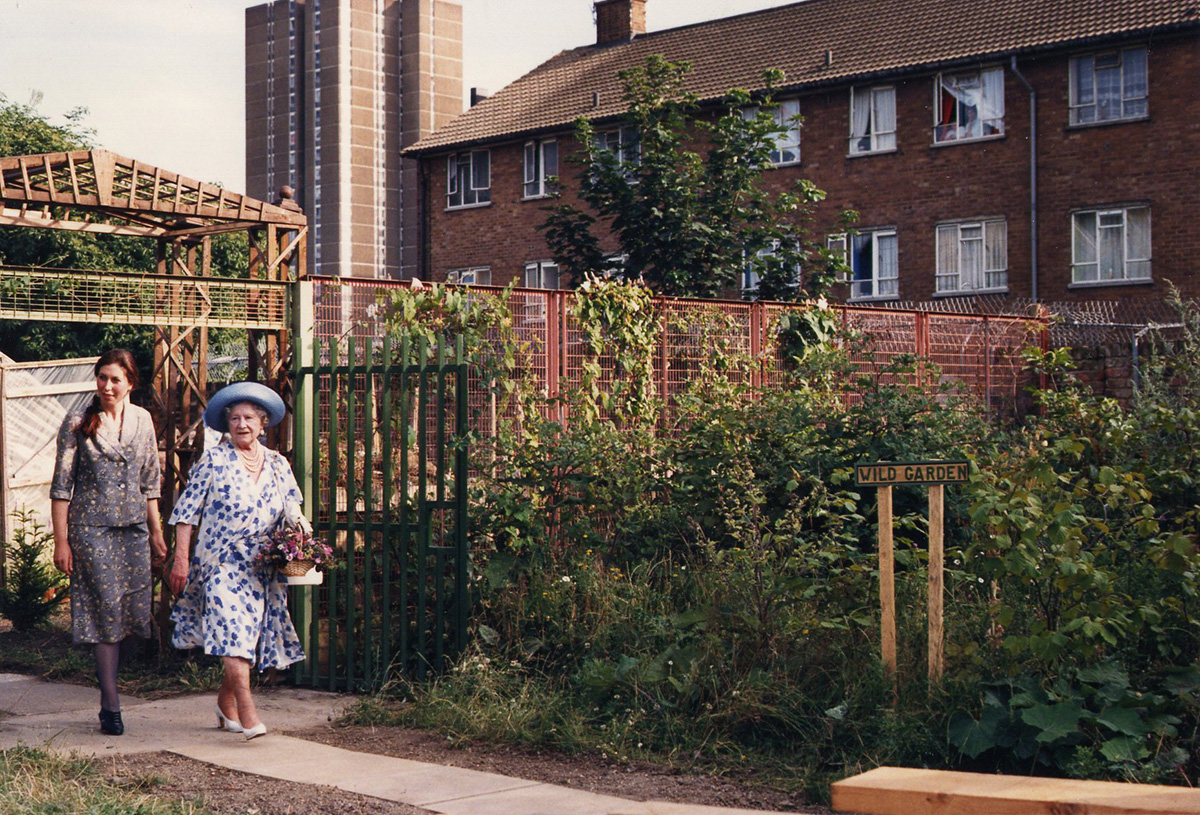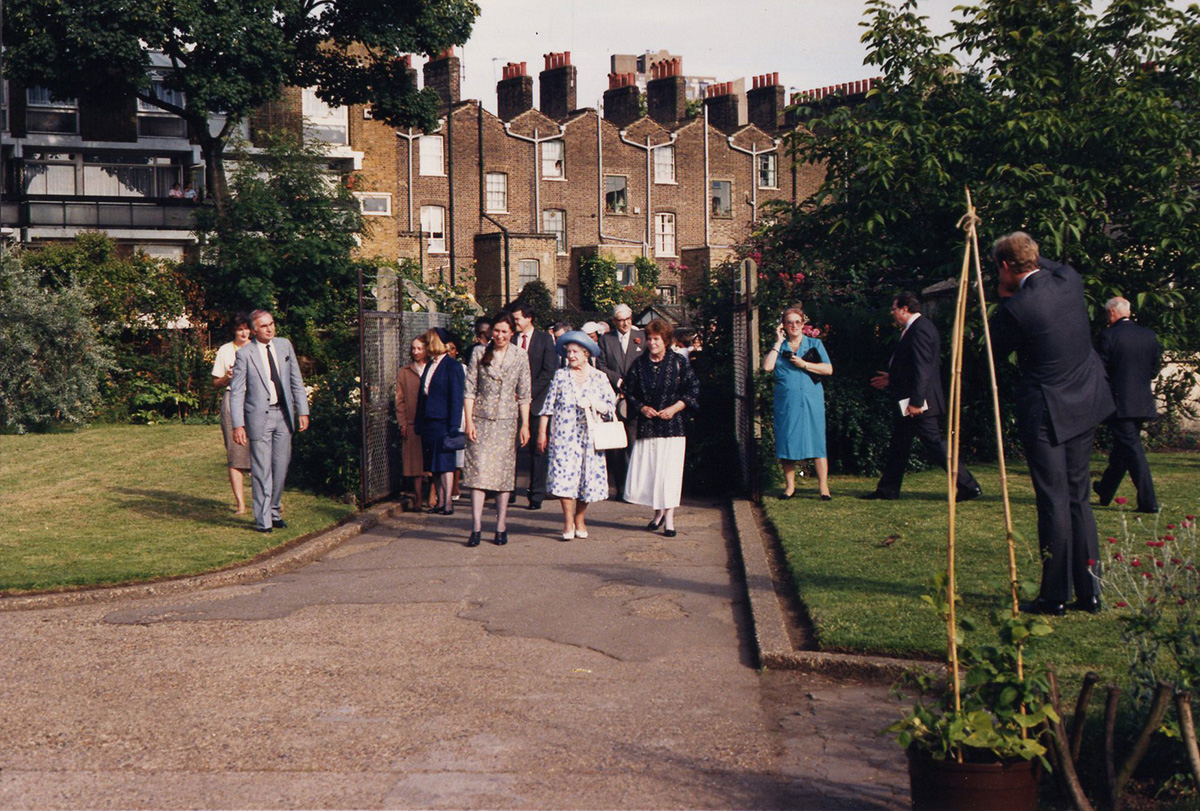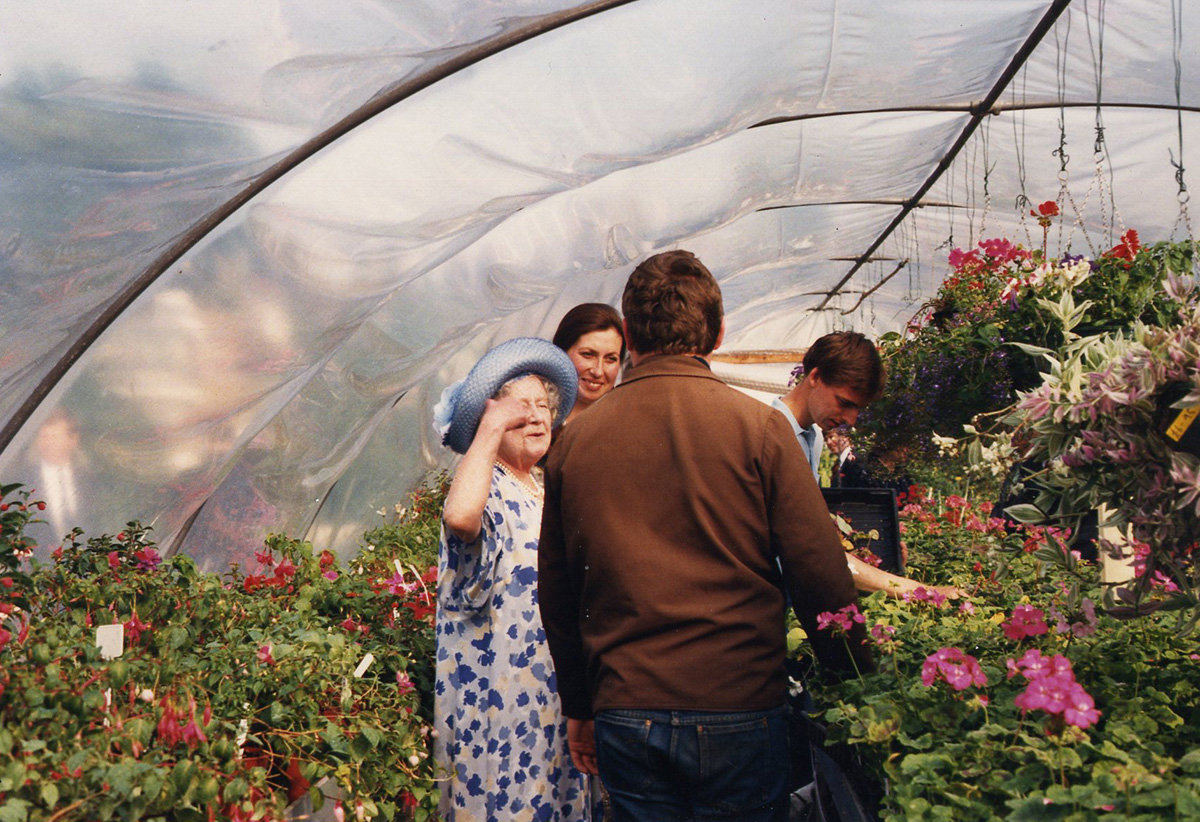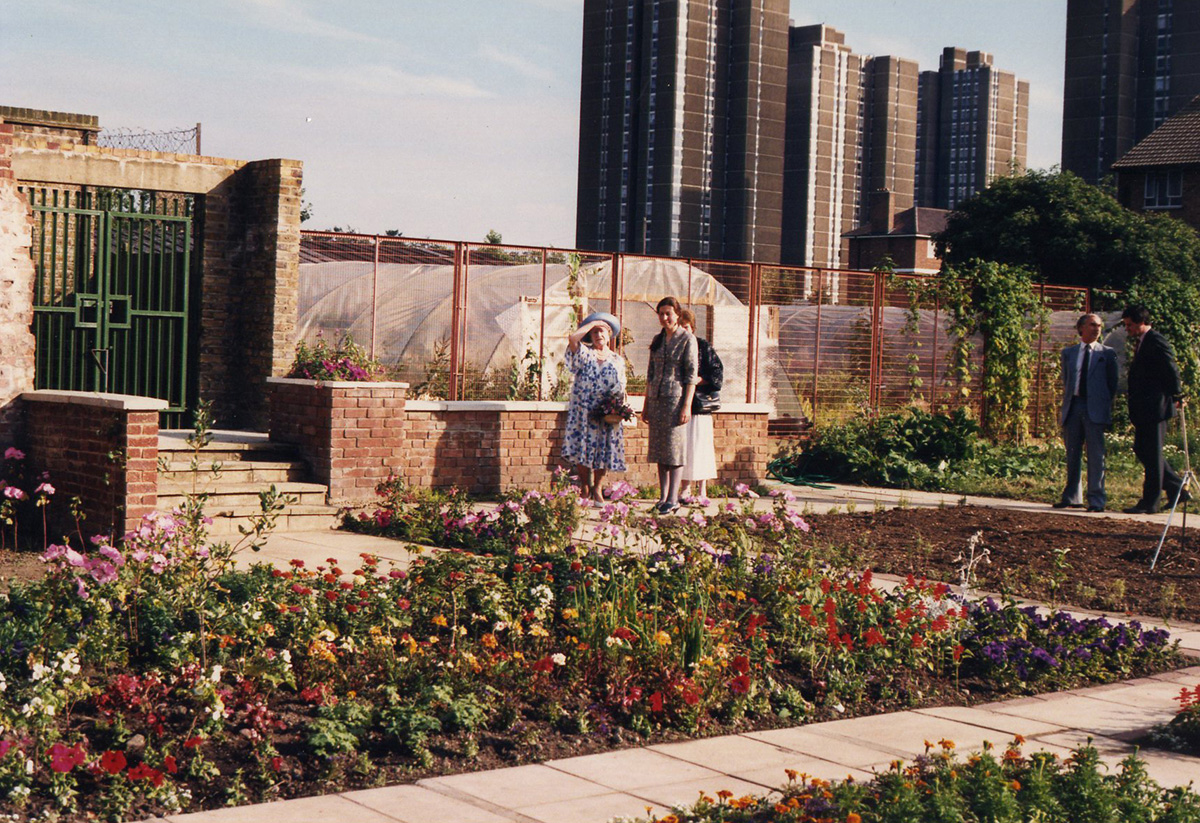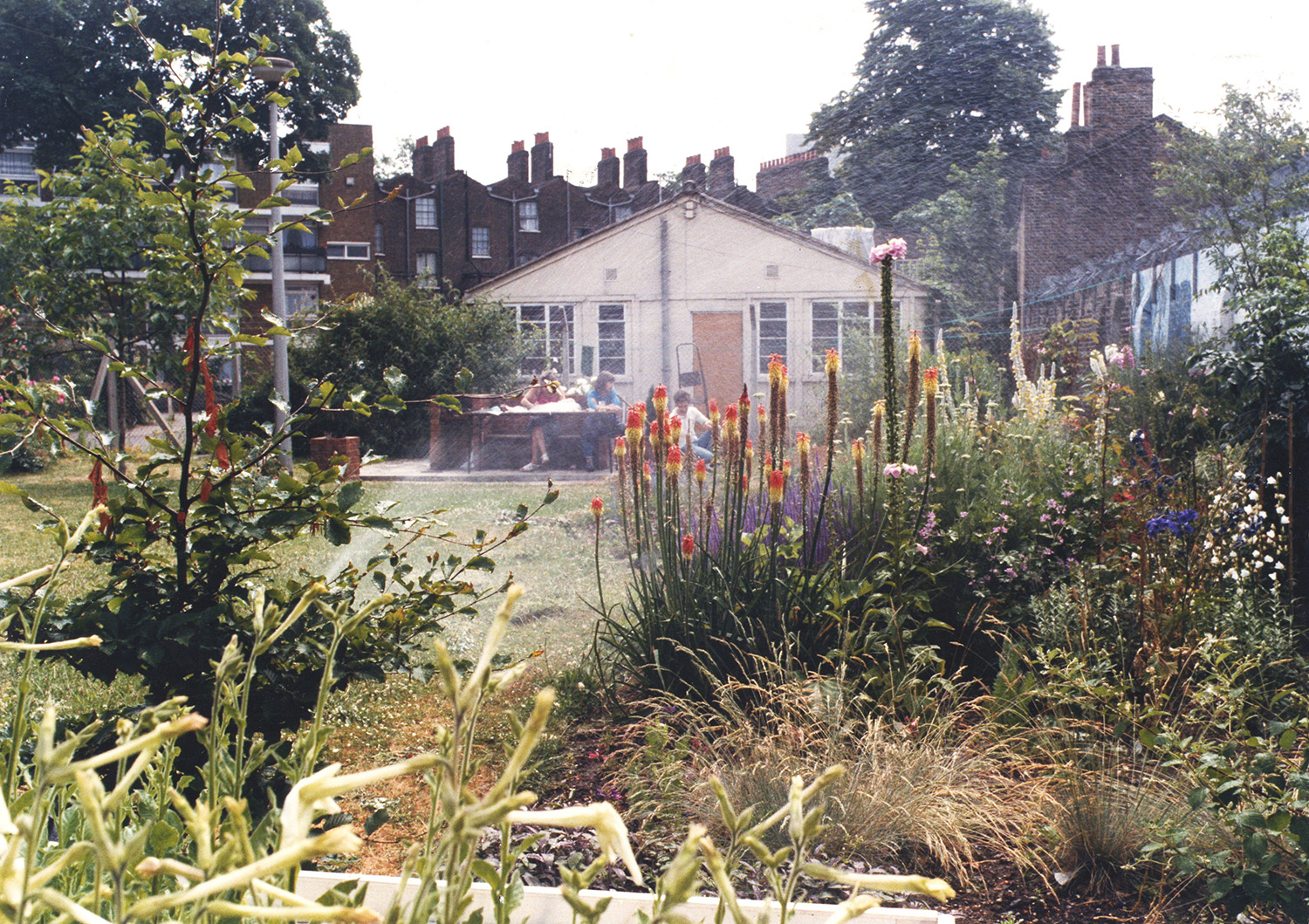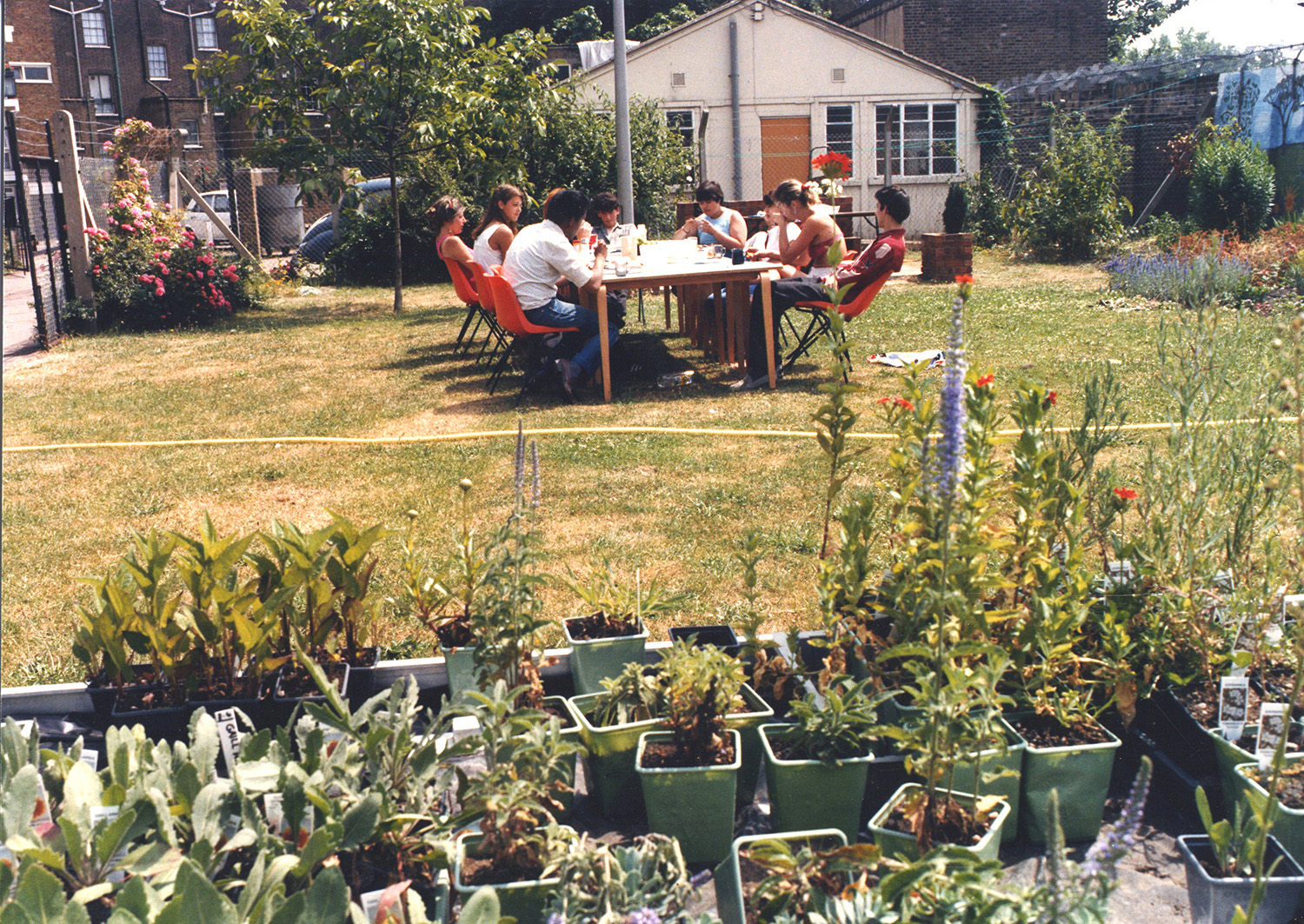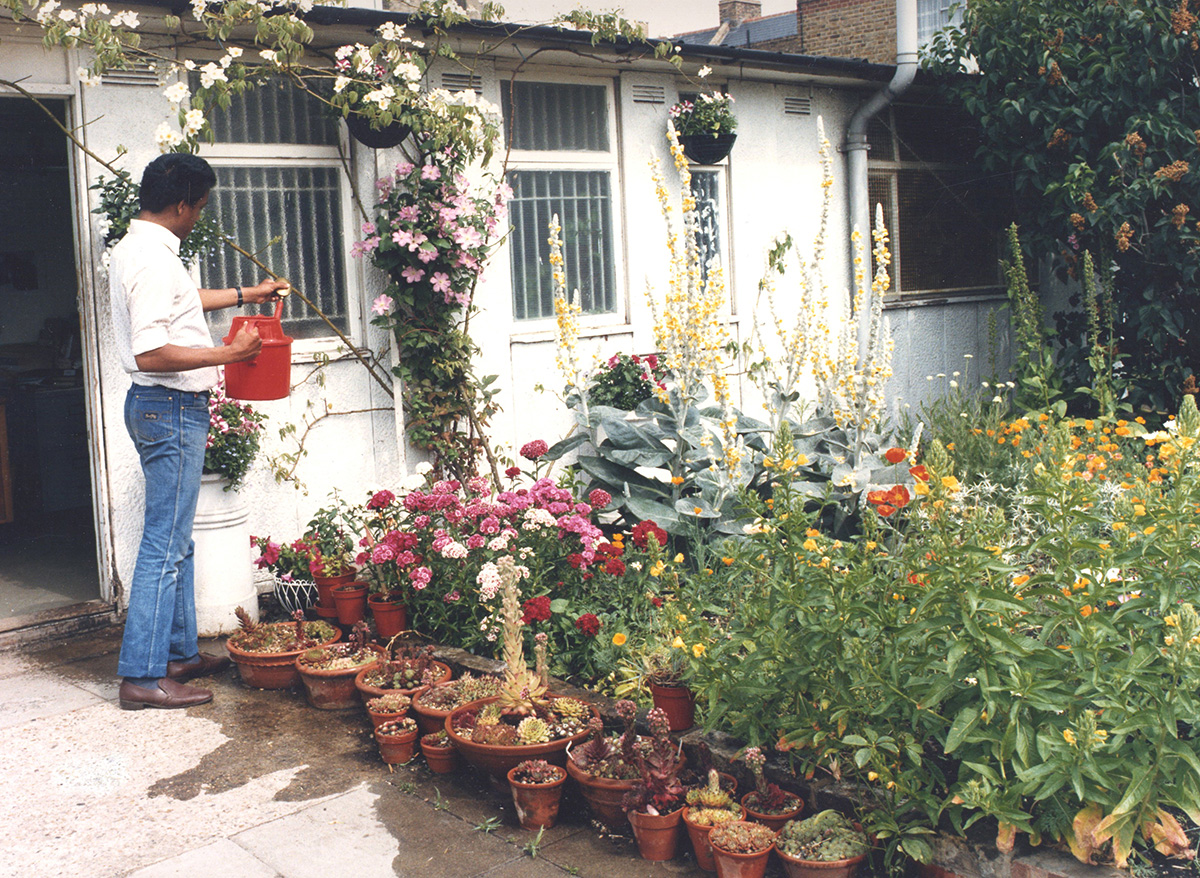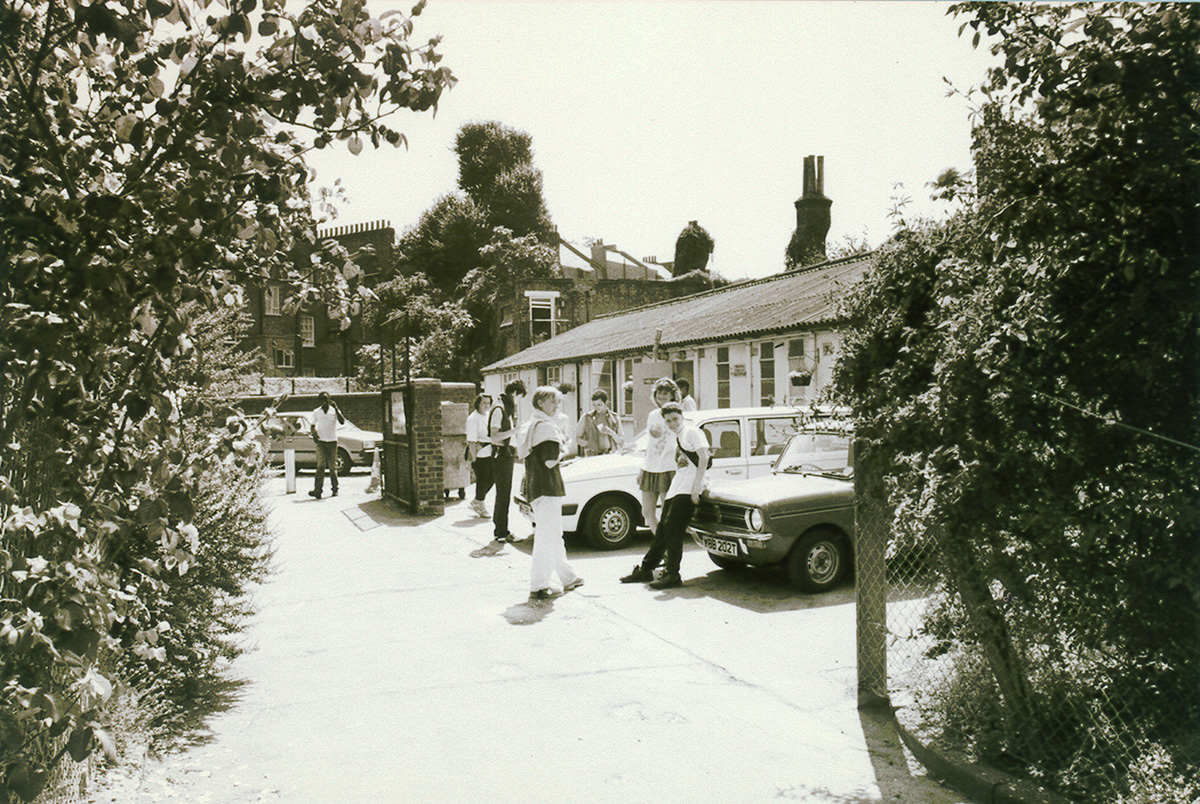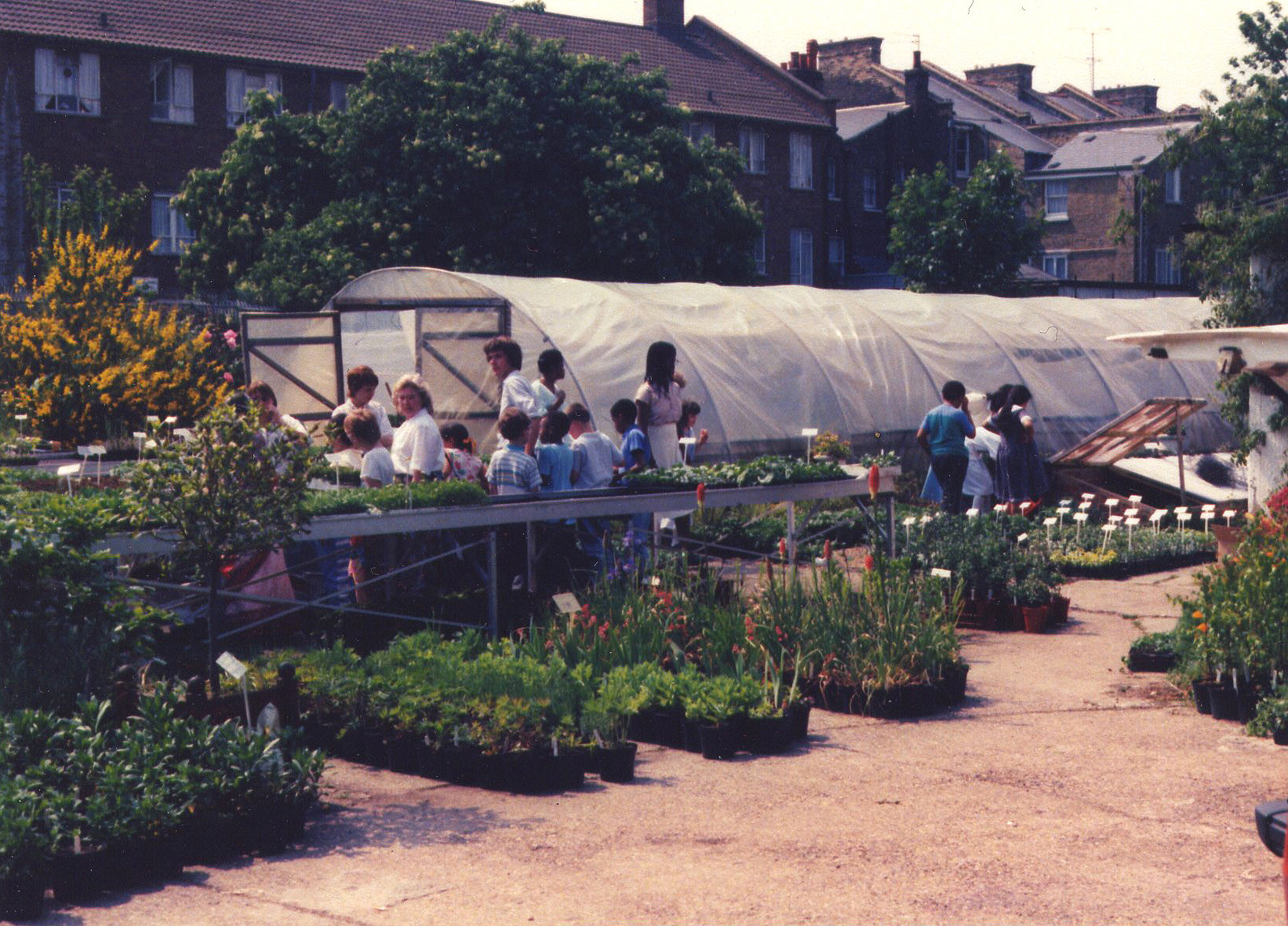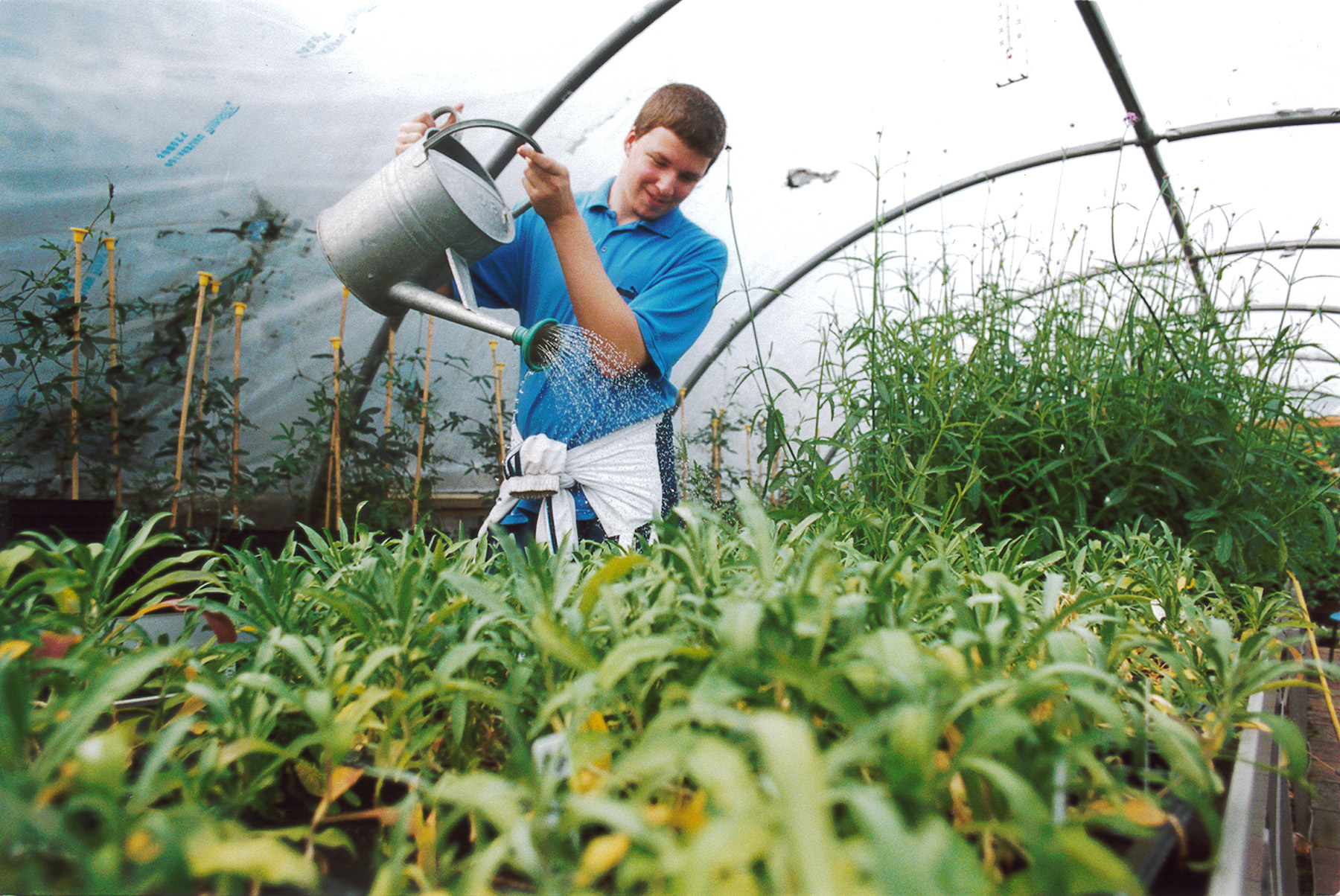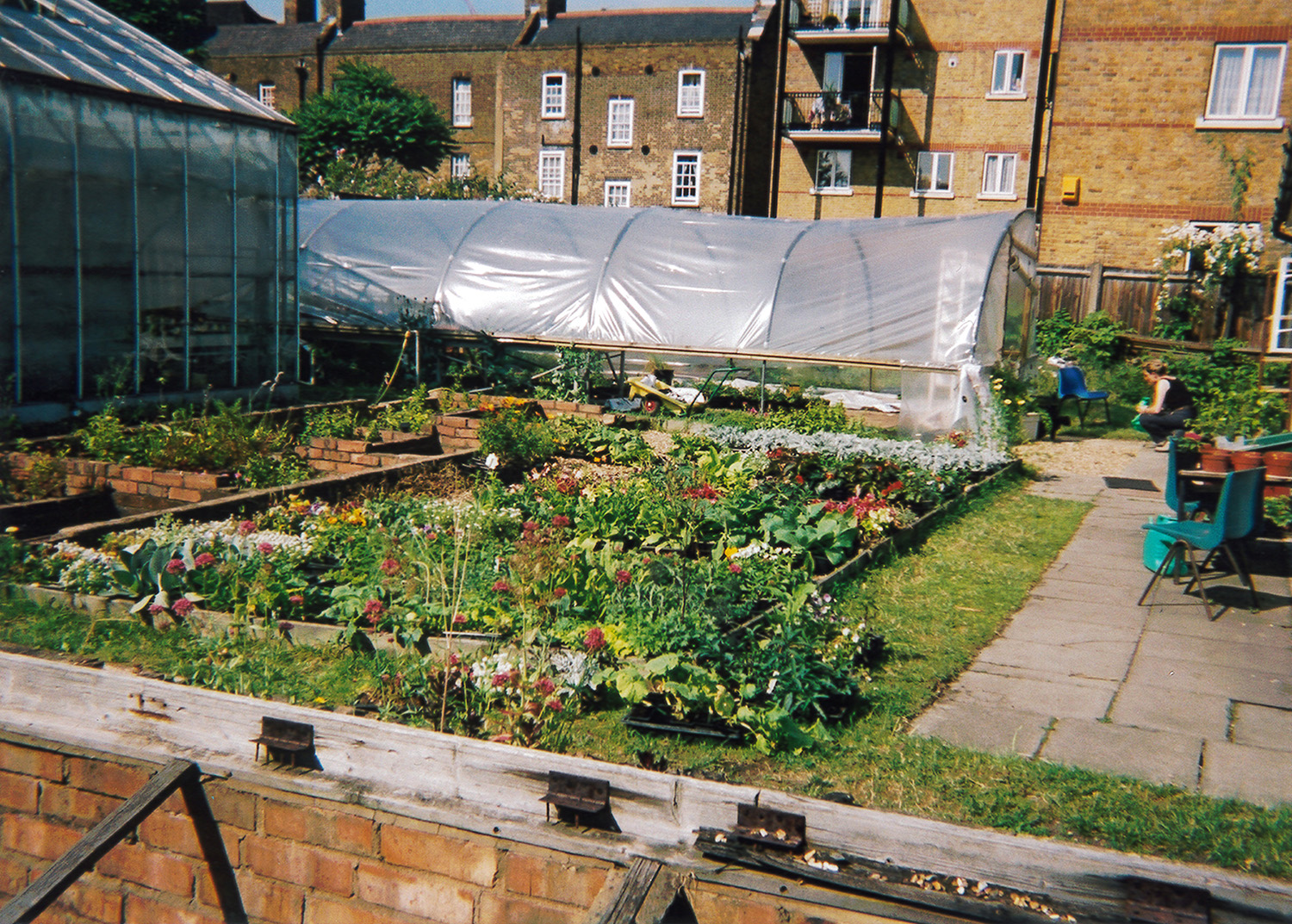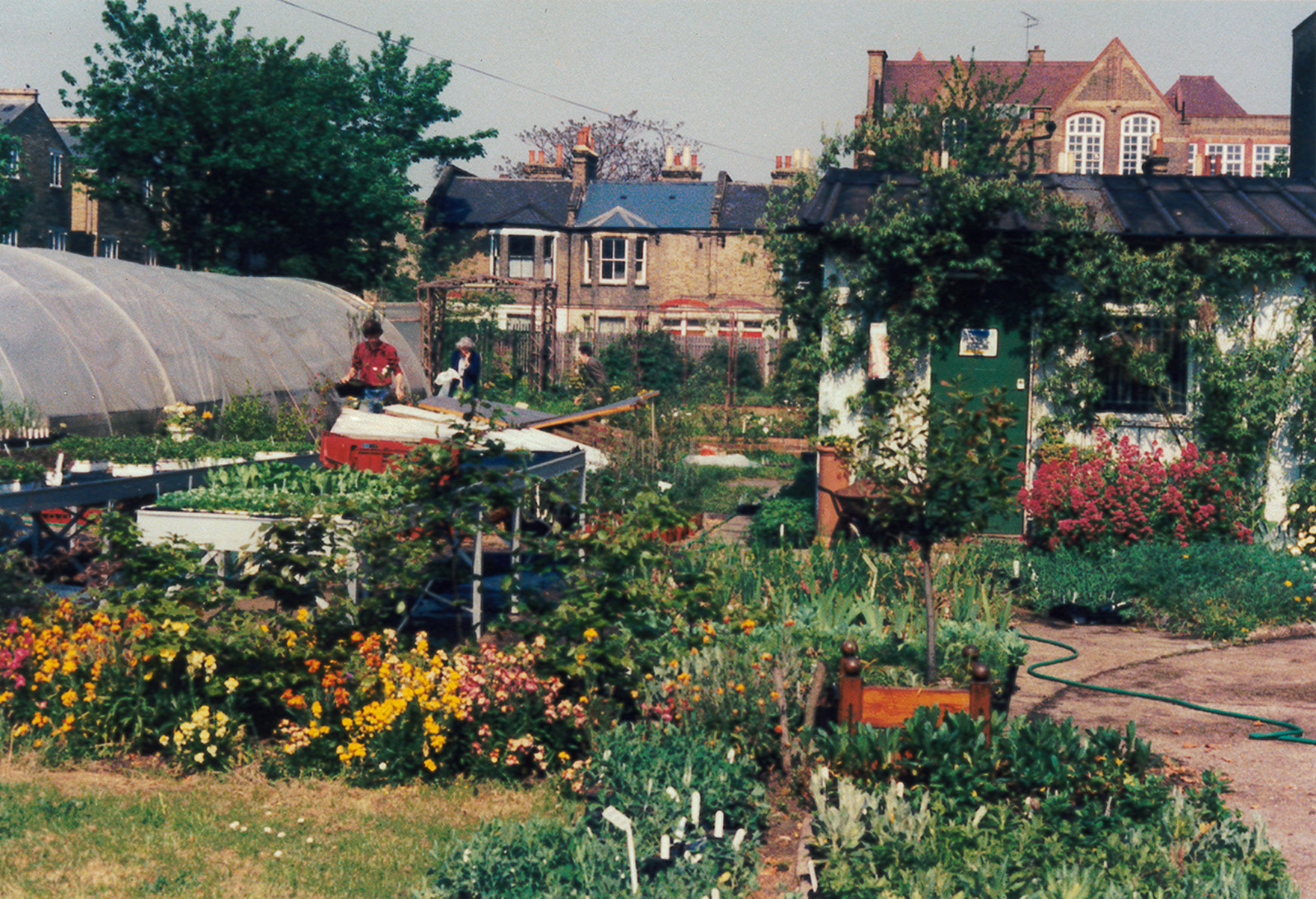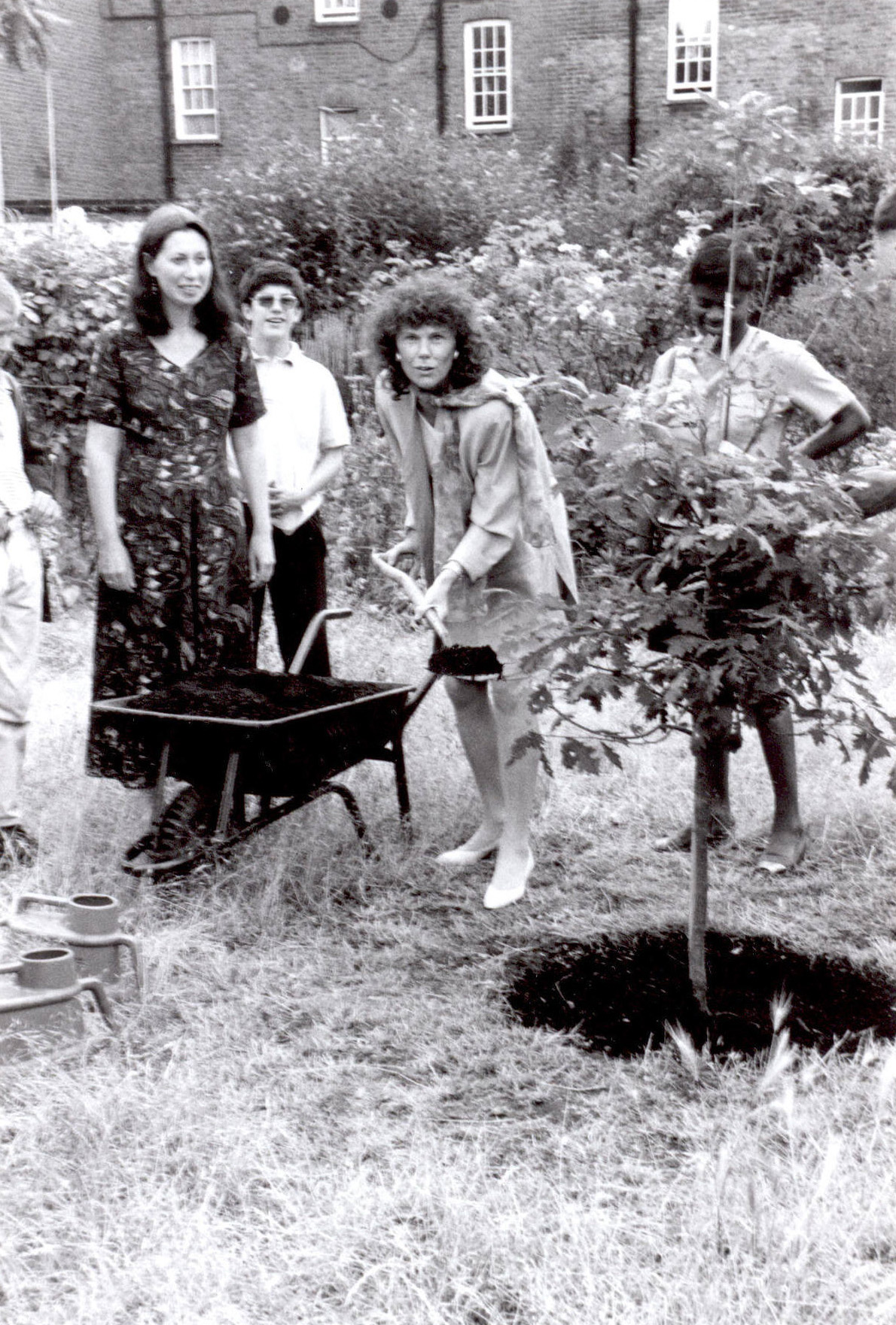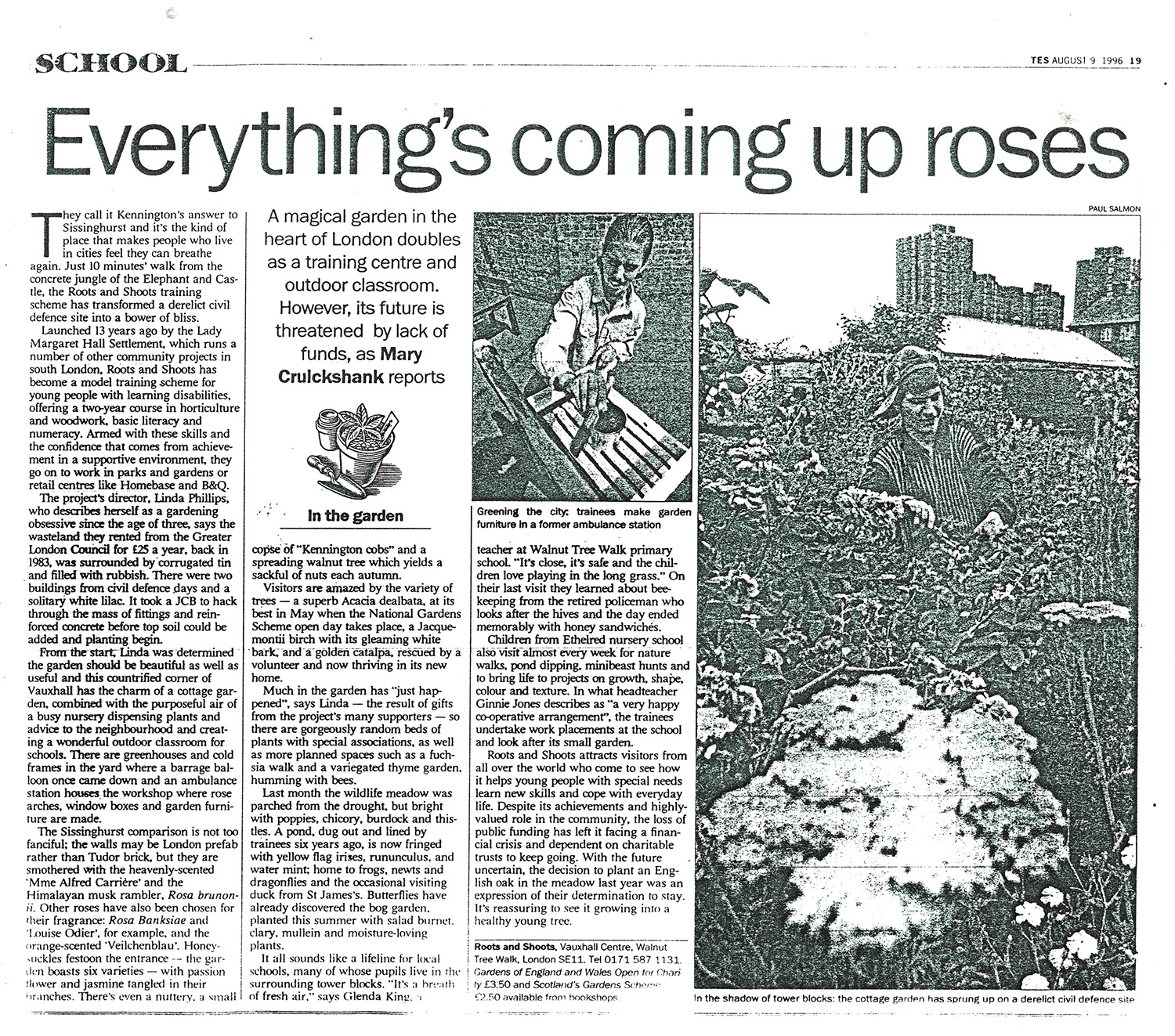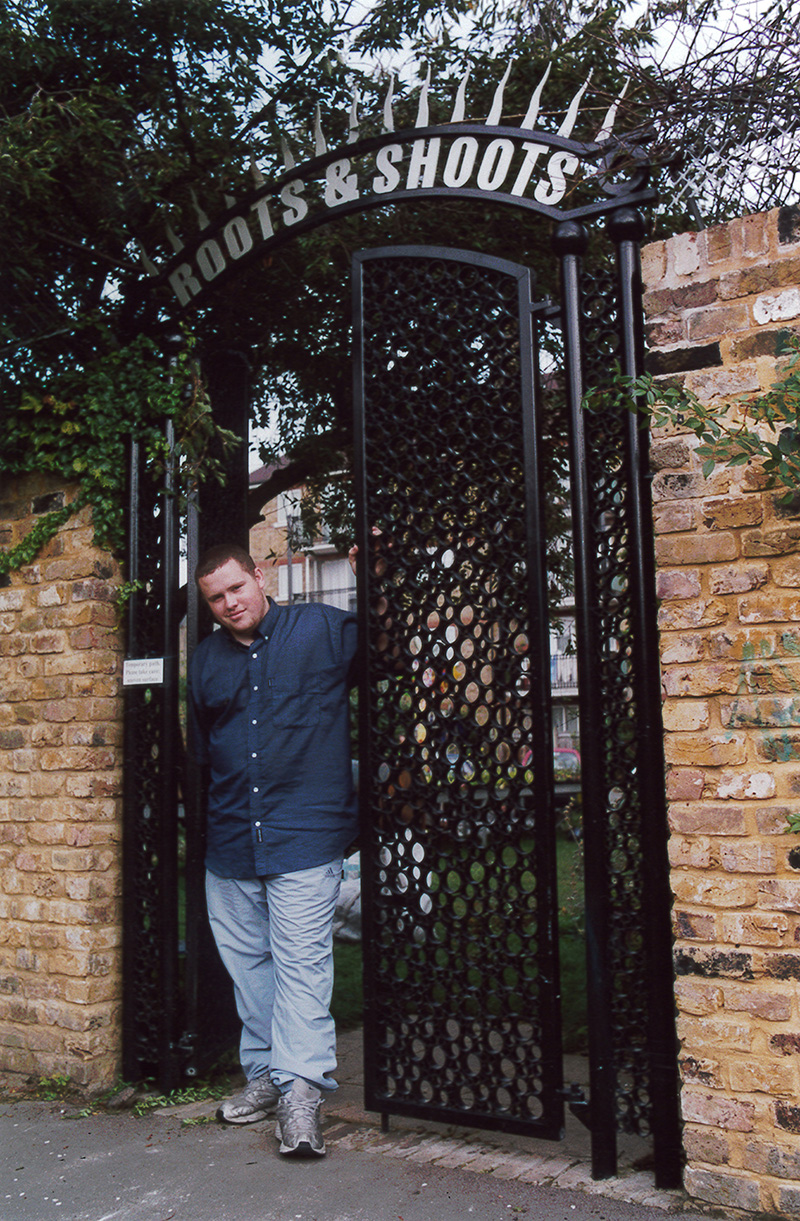From a derelict site in 1982, Roots and Shoots has grown to become a well-established and respected vocational training organisation with biodiverse wildlife gardens, offering a safe haven for both people and nature to flourish.
June 1988 - The Wild Garden Opening
In June 1988, as part of the London Gardens Society, Roots and Shoots was officially visited by Her Majesty The Queen Mother, to see the whole site, meet students and local people, and officially open the Wild Garden.
She had a rapturous welcome and the local people living in the adjacent flats came to their balconies to watch and cheer. This visit gave Roots and Shoots credibility with the local people and funders.
1980s Roots and Shoots Settles In
By the end of the 1980s, the Roots and Shoots site had been transformed into a green place much more resembling what we think of as Roots and Shoots today, with buildings covered in roses and clematis in the style of country cottages, lush herbaceous borders and overflowing plant pots. All this was possible because of the collaboration between staff, students, and volunteers from the local community.
1991 Community Plant Sales
In the 1980s and 1990s there were very few garden centres in London, and it was hard for local people to buy plants nearby. Roots and Shoots provided a much-needed plant nursery in central London with affordable prices for people’s balconies and small gardens.
Students also produced made-to-order garden furniture such as tables, chairs and benches in woodworking classes for private gardens, schools and local community organisations like Jamyang Buddhist Centre London.
1994 Close to Collapse
In the early 1990s, fundraising became more important due to a political change, which dictated that charities were now expected to be run like businesses. The Lambeth grants which funded Roots and Shoots were replaced with contracts, and the site rent was significantly increased. This put considerable pressure on finances.
In 1994 Roots and Shoots was close to collapse with only £10 to its name. In an effort to save the organisation, the students put together a petition of 10,000 signatures from local people which drew enormous support. This led to Kate Hoey (MP for Vauxhall) bringing up Roots and Shoots’ struggle to be funded in parliament to the then-Prime Minister John Major, who promised new support.
From this community and political support, Roots and Shoots was given a new contract and some funding to continue, though additional fundraising was essential.
An English Oak tree was planted in the centre of the Wild Garden by Kate Hoey, to mark the saving of Roots and Shoots, and create publicity for further funding.
1996 Roots and Shoots Article in The Times
“A magical garden in the heart of London doubles as a training centre and outdoor classroom. However, its future is threatened by lack of funds”
On August 19th 1996 The Times Educational Supplement published an article about Roots and Shoots, focusing on the good work done, and the threats to the programme’s existence due to lack of funding, which continued to be a key issue throughout the 1990s.
1997 Roots and Shoots Becomes Independent
In 1997, Roots and Shoots became an independent charity in its own right, separate from Lady Margaret Hall Settlement, with its own set of trustees. It also set up a Company Limited by Guarantee.
Finances were still dire, but with the founding of Roots and Shoots as an independent charity, the organisation gained European Single-Regeneration Budget funding from the Government Office for London.
Part of this funding gave Roots and Shoots public access to Fitzalan Street and the green space beyond by building a new entrance into one of the walls, so facilitating further community engagement. This entrance is now called the Bubble Gate, due to its unique bubble design.
Roots and Shoots was also significantly supported during this time by revenue funding from the Esmée Fairbairn Foundation.



